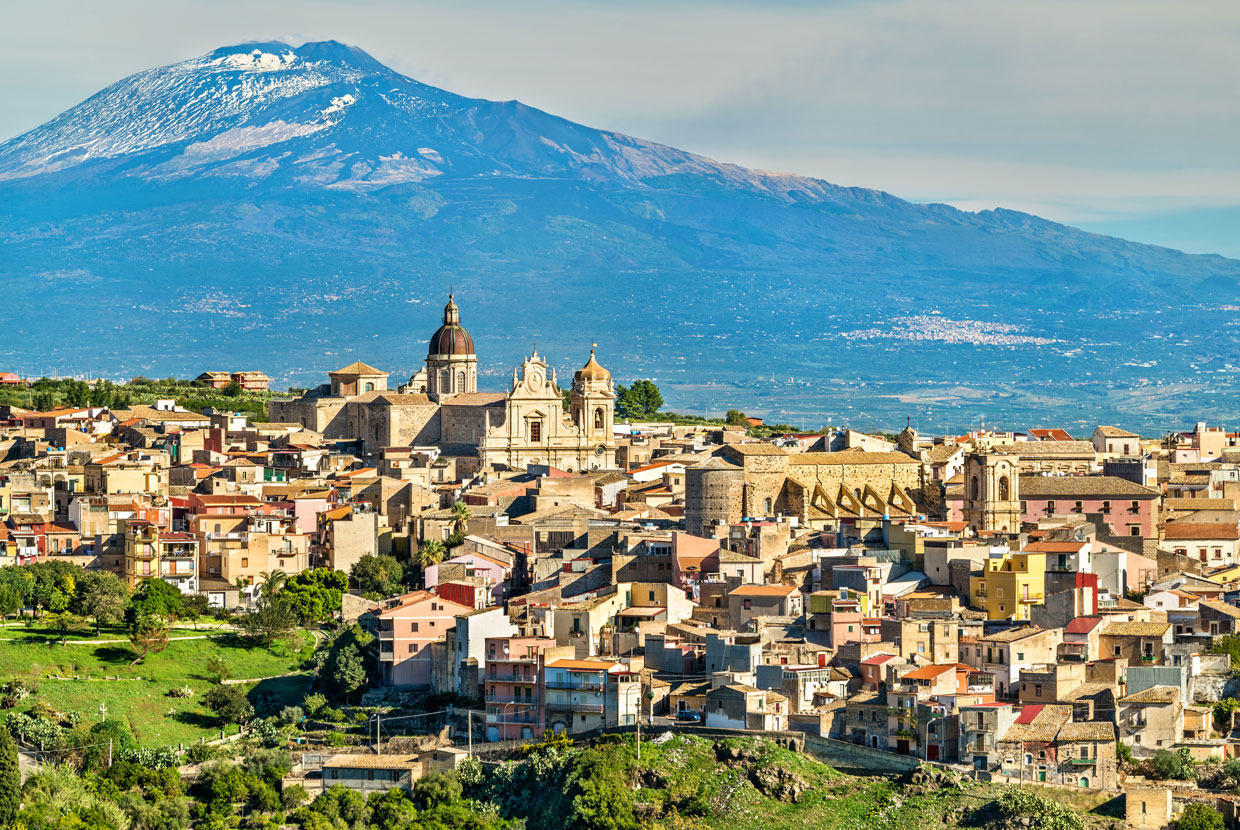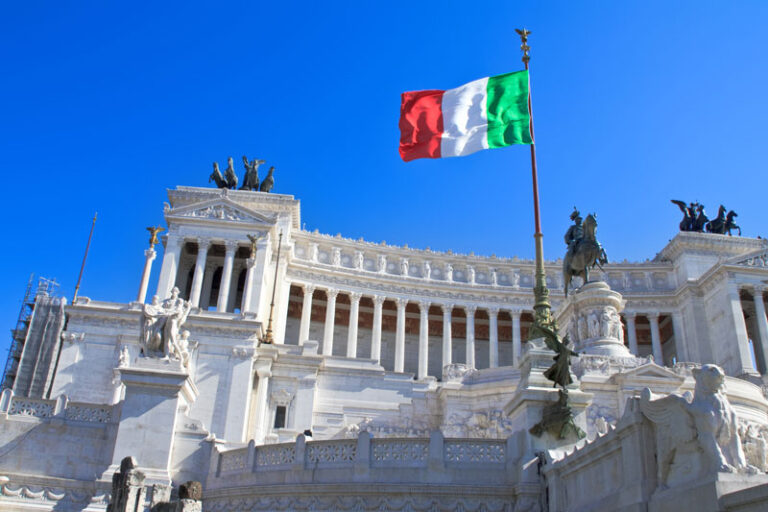
Located on the east coast of Sicily, Mount Etna looms high over the city of Catania and this active volcano (3,329m) is the largest in Europe. In fact, Mount Etna is in a constant state of activity and has even erupted on several occasions over the past five years.
In terms of scale, Mount Etna dominates the skyline in Sicily like an immense cloud of earth and many experts believe this active volcano covers over 450 square miles. Interestingly, more than 25% of the Sicily population inhabits the slopes of Mount Etna, which means that the surrounding towns can often benefit from the influx of tourists. Meanwhile, previous eruptions have left behind some especially fertile lands from which local farmers can certainly take advantage.
In this article, we take a look at the history of Mount Etna and what you can expect when visiting this snow capped volcano at the heart of Sicily:
A Brief Look at the History of Mount Etna
According to volcanologists, Mount Etna first exploded back in 1500 BC and has been growing consistently for more than 500,000 years.
While we know that the volcano is situated on the convergent plate margin between Africa and Eurasia, ancient mythology had a much more elaborate way to explain the eruptions. In other words, the Greeks believed that the volcano was used to create thunderbolts by the god Hephaestus and that the eruptions were triggered by the Titan Enceladus who was imprisoned inside the mountain.
In case you might be asking yourself, the most powerful eruption took place in 1669 and the longest eruption lasted for more than a decade in the 1970s. Although the most recent eruption took place in 2007, the volcano remains active and some experts expect another eruption in the near future.
And there are visible signs to support this theory…
The Active Nature of Modern Day Mount Etna
You see, an active pit crater was also spotted by a volcanologist in recent times and these pits are most often caused by the explosion of a magma chamber just beneath the surface. As time passes, this can sometimes cause the ground to collapse and the lava below to become exposed.
Now, that’s not to say an active crater pit is caused by volcanic eruption but rather that they can sometimes act as a warning in terms of an impending eruption.
As if that’s not enough, Volcanic Discovery also reported that emissions of steam and gas are now visible and an intermittent glow is present after dark. Just so you know, this is quite common for an active volcano and it can still take decades or longer for anything more to transpire from these signs.
But what does the volcano look like exactly?
What to Expect When Visiting Mount Etna
At the mouth of Mt Etna, you can see a plume of smoke and the surrounding landscape is covered in lava rock from recent eruptions. With each eruption, the terrain changes and it can make the trip to the top a lot more challenging than one might expect. For this reason, it’s important to have a realistic expectation of what the trip to Mount Etna involves and this is especially true if you intend on hiking to the top.
For example, the walk to Mount Etna is long and quiet. You will encounter other tourists but for the most part, there is very little vegetation or life to be found along the way. As for the conditions, the sun can burn, while the air is thin and cold which makes the pace a lot slower than expected.
Closer to the actual volcano, you will find the landscape is increasingly red which is largely to do with natural oxidation and the amount of iron-minerals in the rocks. At the same time, it gets increasingly windy toward the summit with the most blustery section being the ledge of the highest volcanic vent.
Some Last-Minute Tips for Visiting Mount Etna
In order to reach Mount Etna, depending on where you are coming from and the Italian passport requirements, you will likely need to take a bus from Catania to Rifugio Sapienza near the town of Nicolosi. You can also find shuttle buses from Taormina but either way, early morning is the best time to start the journey. At this point, you then have the option of either hiking to the vent or taking a guided tour (€30) in a waiting Jeep. Needless to say, the latter requires a lot less effort.
Here are just a few more tips for visiting Mount Etna:
Sun-cream – You can find yourself in real trouble without sufficient sun protection. Take a high factor sunscreen for your face and make sure that you have sunglasses.
Warm Clothing – It gets warm on the way up Mount Etna but keep in mind that it also gets old and windy later on. Taking warm clothing is essential if you want to enjoy the views from the top.
Hiking Shoes – As you might expect, volcanic landscapes are uneven and rocky at the very least. Wear shoes with a decent grip and certainly not flip-flops or a tired pair of converse.
Water & Snacks – Make sure that you pack more water than you think you will need and plenty of snacks to replenish energy levels on the way up.
Guided Tour – If you have no hiking experience, you may want to join a guided tour. In many ways, this is a much more enjoyable way to reach the summit and learn all about Mount Etna in the process.
Mount Etna Resources:
- Analyzing Mount Etna’s Lava
- Mount Etna’s Southeast Crater Erupts
- Encore – Fire and Ice of Mount Etna
- The Continuing Eruption of Mt. Etna
- Mt. Etna found to be sliding downhill towards the sea
- Livius: Articles on ancient history
Final Thoughts
As you can imagine, visiting Mount Etna is a magical encounter and an opportunity to stand on top of the largest volcano in Europe. While you may not fancy a walk to the top, guided tours can save you the hassle and there are several ticket deals for Mount Etna to make things more affordable.
Either way, the ancient Greeks paid so much attention to this mountain for good reason and visiting Mount Etna is certainly one of the most captivating and awe-inspiring things to do in Sicily.





